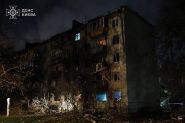- Home
- Middle East
- The War in Ukraine: Where Things Stand Today

©This is Beirut
More than three years after Russia’s invasion, two recent meetings between US President Donald Trump and his Russian and Ukrainian counterparts, Vladimir Putin and Volodymyr Zelensky, have opened the door to the first serious attempt at a settlement.
Washington is pushing to revive diplomacy while Moscow continues to hold nearly one-fifth of Ukraine. At the center of the talks is the thorny issue of borders, where positions remain deeply irreconcilable.
Russia Consolidates Its Grip
Current estimates put Russian control at about 19 percent of Ukraine, roughly 114,000 square kilometers. This includes Crimea, annexed in 2014, nearly all of Luhansk, about 80 percent of Donetsk, and large portions of Zaporizhzhia and Kherson. Together, these territories form a strategic corridor linking the Donbas to Crimea and the Sea of Azov.
On the battlefield, Moscow launched a new offensive in the east in early August. In Donetsk, its forces advanced nearly ten kilometers, directly threatening Pokrovsk, one of the last major cities under Ukrainian control. Kyiv rushed reinforcements to slow the advance. Despite these localized gains, the front line remains largely frozen, locked in costly attritional fighting for both sides.
Insert map here
The Donbas “Fortress Belt”
A key military flashpoint is Ukraine’s so-called “fortress belt” in Donetsk Oblast. Established in 2014, this defensive line stretches nearly 50 kilometers along the H-20 highway linking Sloviansk to Donetsk. Anchored by Sloviansk, Kramatorsk, Druzhkivka, and Kostyantynivka, along with surrounding towns, it has served for over a decade as a strategic barrier to Moscow’s territorial ambitions.
According to the Institute for the Study of War, if Kyiv were forced to cede Donetsk, as Moscow demands, Ukraine would lose this key line of defense with no guarantee that hostilities would end. Russian forces would then gain an ideal position to launch deeper offensives in the Donbas. The fortress belt has thus become a symbol of Ukrainian resilience: losing it would expose the industrial and urban heart of eastern Ukraine.
An Unprecedented Summit in Anchorage
On August 15, Trump and Putin met in Anchorage, Alaska, their first one-on-one encounter since the 2022 invasion. Trump sought a swift ceasefire, but the talks ended without agreement. Both leaders described the discussions as “constructive,” while acknowledging a “major sticking point” remained.
Putin stressed addressing the “root causes” of the conflict, including the status of the Donbas and Ukraine’s potential NATO membership. Several media outlets reported that he proposed ending hostilities if Ukraine withdrew entirely from Donetsk. Excluded from this initial phase of talks, Kyiv immediately rejected any arrangement made without its participation.
Washington Welcomes Zelensky
Three days later, on August 18, Trump hosted Volodymyr Zelensky in Washington. Several European leaders were present to show international support for Kyiv.
Trump promised security guarantees, emphasizing that the United States and Europe would work together to protect Ukraine. Zelensky hailed the meeting as “an important step” and called for the guarantees to be formalized in writing. As a gesture of goodwill, he proposed a $90 billion arms deal with the US.
Trump also revealed that he had spoken with Putin by phone, preparing the ground for a potential direct meeting between the Russian and Ukrainian presidents in a neutral third country.
Claims and Red Lines
Positions remain sharply divided on borders. Moscow demands recognition of its control over the four regions annexed in 2022 - Donetsk, Luhansk, Kherson, and Zaporizhzhia - as well as Crimea, and insists that Ukraine permanently abandon any plans to join NATO.
Kyiv, in contrast, rejects all territorial concessions. Zelensky has repeatedly stressed that peace can only come through a full return to the 2014 borders. Ukrainian law reinforces this position, making any surrender of sovereignty illegal.
Ceding Donetsk would carry particularly severe consequences. Beyond the territorial loss, it would mean abandoning the fortress belt, Ukraine’s primary line of defense for over a decade, exposing the industrial and urban heart of eastern Ukraine.
Read more





Comments